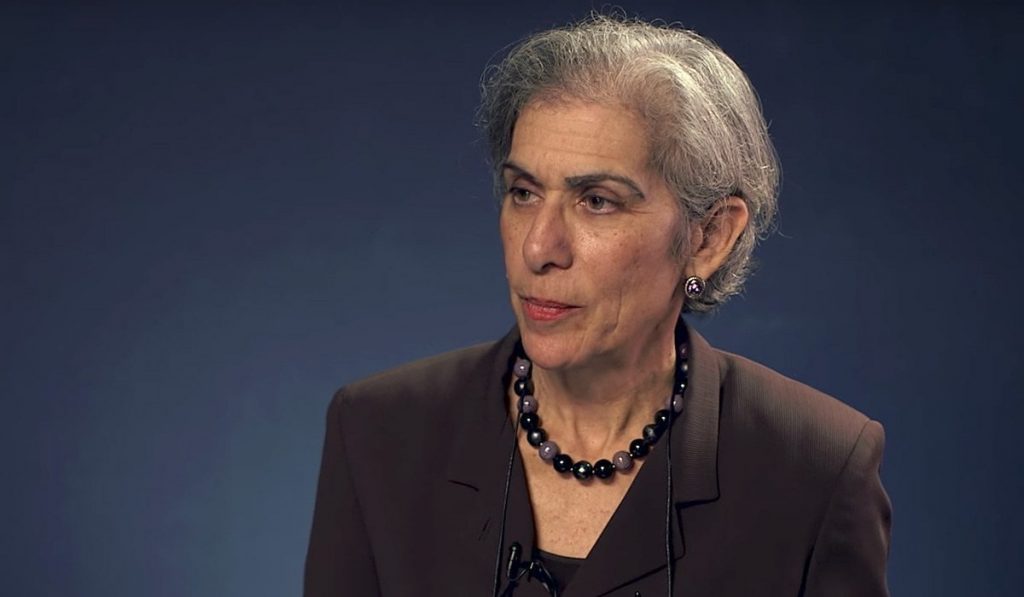
Nearly 10 years ago, Penn law professor Amy Wax wrote an excellent book, Race, Wrongs, and Remedies: Group Justice in the 21st Century. Last summer she co-authored a Philadelphia Inquirer op-ed arguing that all cultures are not equal. It provoked a virtual implosion at Penn and beyond. Now she’s done it again, becoming a larger and stronger voice for sanity simply by stating facts that have caused large numbers of Penn law deans, colleagues, and students to erupt.
In a March 21 video interview with Brown University economist Glenn Loury, Wax stated that she didn’t think she’d ever seen black law students in the top of their class because they had been admitted with lower qualifications than their peers. This time, after the predictable response from progressive sources, Wax was “barred from teaching” her required first-year course. She replied in an incisive Wall Street Journal op-ed, and the controversy, with an emphasis on Penn’s cravenness, was ably summarized by Heather Mac Donald here.
It should no longer be surprising that progressives want to ban or silence views that make them uncomfortable, but it is nevertheless striking that in this case, Professor Wax’s offense consisted of nothing more than stating, in effect, that her personal observations confirmed the findings of Richard Sander’s and Stuart Taylor’s “magisterial” (from my review on Minding The Campus) Mismatch: How Affirmative Action Hurts Students It’s Intended to Help, and Why Universities Won’t Admit It.
Two-thirds of Black Students in Bottom 15%
Sander’s empirical analyses, summarized here, found, for example, that “two-thirds of black [law] students end up in that bottom 15%” of their classes and that that “the median black student at all of the schools using substantial racial preferences had an LGPA that placed her within only the sixth percentile of the white students. In other words, 94 percent of whites were getting better grades than the median black. Conversely, only about 10 percent of all black students were making it into the top half of their classes.”
Incidentally, or perhaps not so incidentally, Sander’s initial publication of his findings, “Systematic Analysis of Affirmative Action in American Law Schools,” 57 Stanford Law Review 367 (2004), had first been submitted to the University of Pennsylvania Law Review. “Within a couple weeks, they got in touch with news that the piece had been accepted for publication,” Sander reported in Mismatch. “But a few days later a very embarrassed editor called back. Word about the article had spread to the entire Law Review membership, and a battle had erupted over whether UPLR should be associated with something so controversial. The membership had eventually voted to rescind the offer.”
Law Review Refuses to Run Article
One suspects that the “battle that erupted” among the membership of the Penn law review may have been related to the fact that the UPLR had adopted an affirmative action appointment procedure. As described by The New York Times, “the key to the new system seems to be keeping secret newly established numerical goals, so that law students will not be able to determine who is an affirmative action appointment.”
Law School Dean Ted Ruger asserted that “the Law Review does not have a diversity mandate,” but, of course, that does not mean or even claim, it does not have an affirmative action selection procedure. In a similar fashion Dean Ruger has claimed that Wax’s statements are false, but he has not released any data to refute her. In any event, nothing seems to have improved at Penn law since its shameful treatment of Sander in 2004.
Although the spectacle of snowflake students, professors, and deans responding with shock and awe to controversial ideas is all too familiar, there are implications of this latest Wax contretemps that should raise troubling new concerns. Since Professor Wax’s offense is that her personal observations tended to confirm Professor Sander’s analysis, does it follow that Sander’s work should not be assigned to any class Penn students are required to take?
“Oh, no, that’s not the same!” Penn’s skittish deans and sensitive students might insist since work critical of Sander could also be assigned to assure “inclusiveness” etc. But in that case, wouldn’t a professor suggesting, implying, or — heaven forbid — stating that she agrees with Sander also make those objecting Penn students and their enablers feel uncomfortable and “unwelcome”?
The attack on Wax makes clear that the defense of racial preferences requires not only discrimination on the basis of race — that has long been clear — but protecting students from being exposed to unwelcome evidence and suppressing unpopular expression and, perhaps ultimately, even subversive thoughts.
“Rosenberg” i see Louis Farrakhan was right on jews and the deep hate and promote of jews Amy Was she’s jew and John S. Rosenberg too…
John S. Rosenberg maybe you support her because she’s jew like you !
The hate for black and long history of jews destroying black is secular.
We talk all time the racism of white (christians and protestants) but the origin of the hate for blacks are jew. The talmud is one of the most vicious and hatred book about blacks..
Jew are in fisrt like to demonize black in history with religion. Jew take a part in slavery of blacks…
Amy wax another jew have deep hate for blacks (not new)…
I was taught in a large public liberal university (in 1972) the importance of analyzing statistics and appreciating valid research findings. I want to read facts in my daily WSJ and other publications. They are so educational!